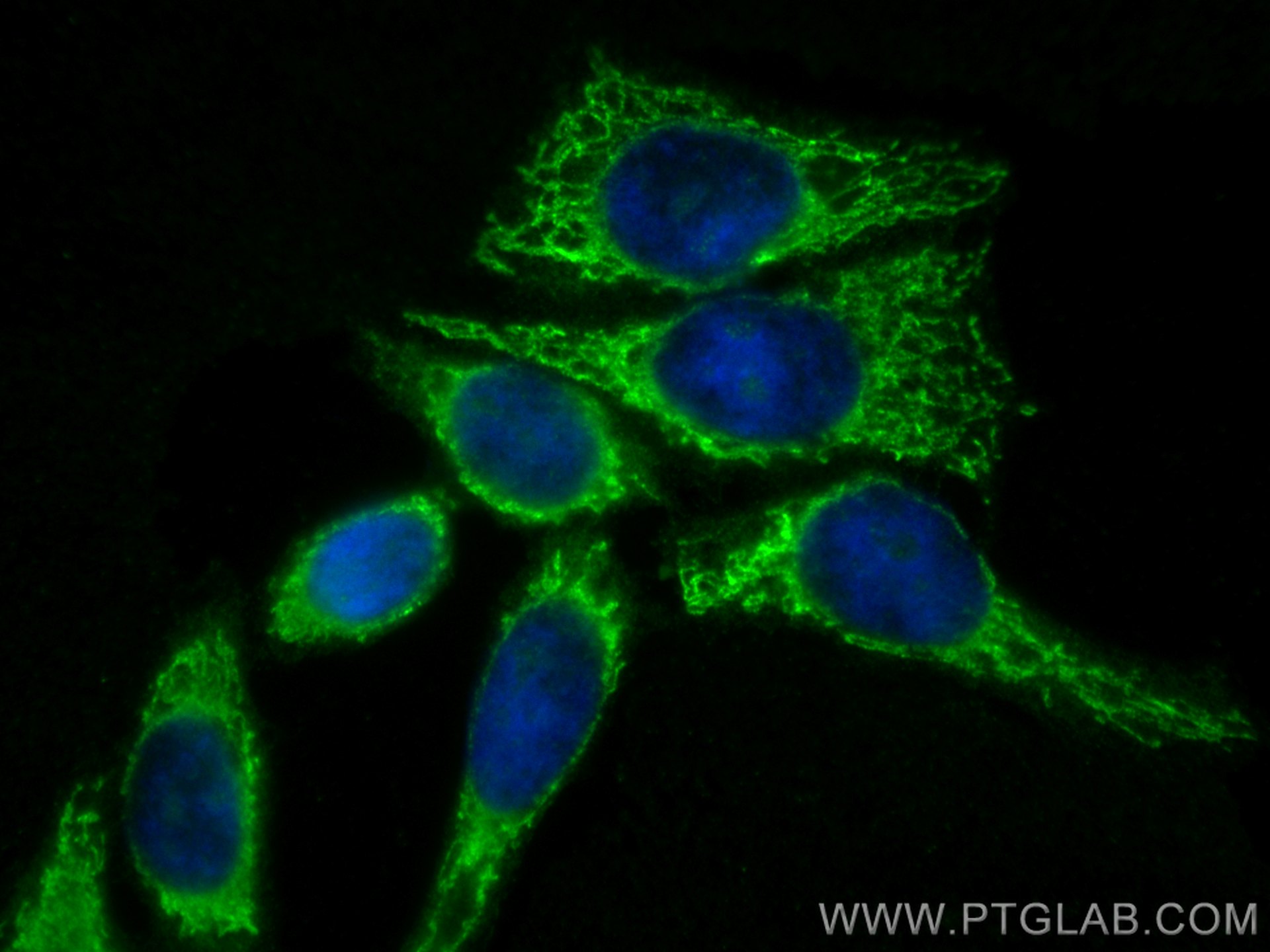Anticorps Monoclonal anti-SERPINA10
SERPINA10 Monoclonal Antibody for IF
Hôte / Isotype
Mouse / IgG2a
Réactivité testée
Humain, porc, rat
Applications
IF
Conjugaison
CoraLite® Plus 488 Fluorescent Dye
CloneNo.
5B3C9
N° de cat : CL488-60113
Synonymes
Galerie de données de validation
Applications testées
| Résultats positifs en IF | cellules HepG2, |
Dilution recommandée
| Application | Dilution |
|---|---|
| Immunofluorescence (IF) | IF : 1:50-1:500 |
| It is recommended that this reagent should be titrated in each testing system to obtain optimal results. | |
| Sample-dependent, check data in validation data gallery | |
Informations sur le produit
CL488-60113 cible SERPINA10 dans les applications de IF et montre une réactivité avec des échantillons Humain, porc, rat
| Réactivité | Humain, porc, rat |
| Hôte / Isotype | Mouse / IgG2a |
| Clonalité | Monoclonal |
| Type | Anticorps |
| Immunogène | SERPINA10 Protéine recombinante Ag2420 |
| Nom complet | serpin peptidase inhibitor, clade A (alpha-1 antiproteinase, antitrypsin), member 10 |
| Masse moléculaire calculée | 444 aa, 51 kDa |
| Numéro d’acquisition GenBank | BC022261 |
| Symbole du gène | SERPINA10 |
| Identification du gène (NCBI) | 51156 |
| Conjugaison | CoraLite® Plus 488 Fluorescent Dye |
| Excitation/Emission maxima wavelengths | 493 nm / 522 nm |
| Forme | Liquide |
| Méthode de purification | Purification par protéine A |
| Tampon de stockage | PBS avec glycérol à 50 %, Proclin300 à 0,05 % et BSA à 0,5 %, pH 7,3. |
| Conditions de stockage | Stocker à -20 °C. Éviter toute exposition à la lumière. Stable pendant un an après l'expédition. L'aliquotage n'est pas nécessaire pour le stockage à -20oC Les 20ul contiennent 0,1% de BSA. |
Informations générales
SERPINA10 belongs to the serpin family. It is predominantly expressed in the liver and secreted in plasma. It inhibits the activity of coagulation factors Xa and XIa in the presence of protein Z, calcium and phospholipid. Mutations in this gene are associated with venous thrombosis.
Protocole
| Product Specific Protocols | |
|---|---|
| IF protocol for CL Plus 488 SERPINA10 antibody CL488-60113 | Download protocol |
| Standard Protocols | |
|---|---|
| Click here to view our Standard Protocols |


